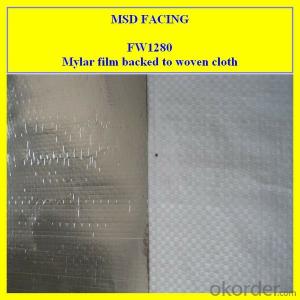Roofing insulation foam is a versatile and efficient solution for home insulation. It’s a material that can be easily applied to various surfaces, including roofs, and it provides excellent thermal and acoustic insulation. In this article, we’ll take a look at the different types of roofing insulation foam, their benefits, and how to choose the right one for your home.
The Science Behind Roofing Insulation Foam
Before we dive into the options, it’s important to understand the science behind roofing insulation foam. This material is made from a combination of polyurethane, isocyanates, and other chemicals that react to form a foam. When applied, it expands to fill the space it’s in, creating an airtight seal that prevents heat transfer and sound transmission.
Types of Roofing Insulation Foam
There are several types of roofing insulation foam available in the market, each with its own set of characteristics and benefits. Let’s explore some of the most common types:
– Spray Foam Insulation: This type of insulation is applied using a spray gun that releases the foam, which then expands to fill the space. It’s known for its excellent adhesion and ability to seal gaps and cracks, making it a popular choice for roofs with irregular shapes.
– Rigid Board Insulation: Unlike spray foam, rigid board insulation comes in pre-formed panels that can be cut to fit the roof. It’s denser and provides better insulation than spray foam, but it’s also more expensive and less flexible.
– Spray Polyurethane Foam (SPF): SPF is a specific type of spray foam insulation that uses polyurethane as its main ingredient. It’s highly efficient, with an R-value (a measure of insulation effectiveness) that can be adjusted by varying the density of the foam.
Benefits of Roofing Insulation Foam
Roofing insulation foam offers a myriad of benefits that make it an attractive option for homeowners:
– Energy Efficiency: By reducing heat transfer, insulation foam can help lower your energy bills by keeping your home cooler in the summer and warmer in the winter.
– Acoustic Insulation: It’s not just about temperature control; insulation foam also helps to dampen noise from outside, creating a quieter living environment.
– Moisture Resistance: Properly installed insulation foam can prevent moisture from entering your home, reducing the risk of mold and mildew growth.
– Longevity: With proper maintenance, insulation foam can last for decades, providing long-term savings on energy and repair costs.
Choosing the Right Roofing Insulation Foam
When it comes to choosing the right roofing insulation foam, there are several factors to consider:
– Climate: The type of climate you live in will influence the type of insulation you need. For colder climates, a higher R-value is desirable, while in warmer climates, you might prioritize moisture resistance.
– Roof Shape and Size: The shape and size of your roof will also affect your choice. Spray foam is ideal for irregular shapes, while rigid board insulation is better suited for flat or simple roof designs.
– Budget: Your budget is a crucial factor. Spray foam insulation tends to be more expensive upfront but can offer long-term savings due to its efficiency and durability.
– Installer Experience: The experience of the installer is also important. A professional installer can ensure that the insulation is applied correctly, maximizing its effectiveness and lifespan.
Application Process
The application process for roofing insulation foam can vary depending on the type you choose. For spray foam, a professional will use a spray gun to apply the foam, which will then expand and harden. For rigid board insulation, the panels will be cut to size and fitted onto the roof. Regardless of the type, it’s essential to follow the manufacturer’s instructions and ensure proper ventilation during the installation process.
Maintenance and Care
Proper maintenance and care are crucial to ensure the longevity of your roofing insulation foam. This includes regular inspections for damage, cleaning to remove debris, and addressing any moisture issues promptly.
The Future of Roofing Insulation Foam
As technology advances, we can expect to see even more efficient and environmentally friendly options in roofing insulation foam. Innovations such as bio-based materials and improved application techniques are on the horizon, promising better performance and reduced environmental impact.
Conclusion
Roofing insulation foam is a powerful tool in the fight against energy waste and uncomfortable living conditions. By understanding the different types, their benefits, and the factors that influence your choice, you can make an informed decision that will pay off in energy savings and comfort for years to come. So, the next time you’re considering insulation options for your home, don’t forget to give roofing insulation foam a serious look.

